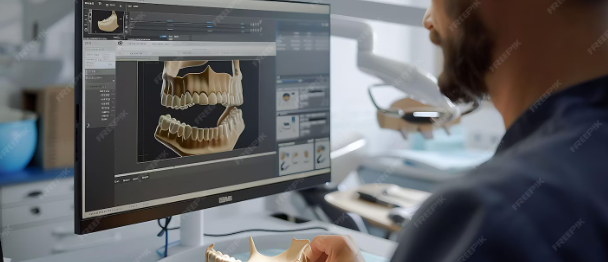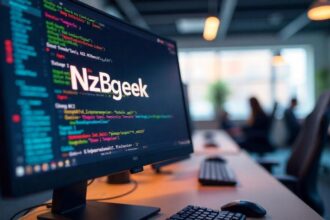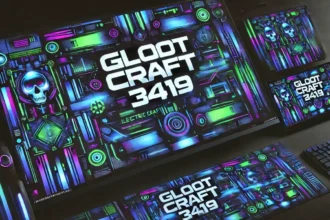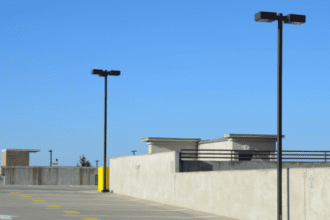In the bustling ecosystem of a modern dental practice or lab, the spotlight often falls on the most visible pieces of technology: the sleek intraoral scanner that replaces messy impressions, the powerful CAD software that designs the perfect crown, and the humming 3D printer that brings it all to life. But there is a crucial, often overlooked piece of digital infrastructure that acts as the conduit between design and reality—the unsung architect of your 3D printed results.
This architect is the slicer software.
For those new to 3D printing, the question arises: “My scanner and CAD software are where the magic happens, so why does the slicer matter?” The answer is simple yet profound: A 3D printer cannot understand a design file. It can only understand a series of commands telling it where to move, when to pause, and when to expose a layer of resin to light. The slicer is the sophisticated translator that converts your intricate 3D model into these precise, layer-by-layer instructions.
In the demanding world of dentistry, where accuracy is measured in microns and a single failed print can disrupt a patient’s treatment plan, using a generic slicer is like using a road map for heart surgery—it’s the wrong tool for the job. A specialized dental slicer like CHITUBOX Dental is not just an optional step; it is the fundamental bridge that ensures your digital investment translates into predictable, clinical, and economic success.
Here’s a deep dive into how a specialized slicer, specifically CHITUBOX Dental, actively revolutionizes dental workflows.
1. Achieving Clinical-Grade Accuracy: The Fight Against Dimensional Error
The core promise of digital dentistry is accuracy. A crown must fit a prep with sub-100-micron precision; a surgical guide must direct an implant drill without deviation. This accuracy can be easily lost in the printing process due to factors like resin shrinkage and polymerization forces.
How CHITUBOX Dental Solves This:
- Material-Specific Print Profiles: This is the cornerstone of accuracy. CHITUBOX Dental comes pre-loaded with a vast library of validated printing profiles for specific combinations of 3D printers and dental resins. When you select “Printer X” and “Surgical Guide Resin Y,” the software automatically applies the ideal layer exposure time, lift speed, and retract settings.
- The Impact: This eliminates the guesswork and weeks of manual calibration. These pre-tuned settings are engineered to compensate for the specific shrinkage and curing characteristics of each resin, ensuring that the final printed part dimensions match the digital design as closely as physically possible. For an implantologist, this means a surgical guide that fits the model—and the patient—flawlessly.
- Precision Support Engineering: Supports are necessary but can be a source of inaccuracy. Thick, poorly placed supports can exert force on delicate features, causing warping. A scar from a support on the intaglio surface of a guide can compromise its seat.
- The Impact: CHITUBOX Dental provides granular control over support structures. The user can run an intelligent auto-support algorithm and then manually refine every single support. This allows a technician to place robust, anchor-like supports on non-critical thick areas and fine, easily removable “touch-point” supports on critical margins, preserving the geometry and surface finish of the most important features.
2. Driving Economic Efficiency: The War on Waste
Dental resins are significantly more expensive than standard 3D printing materials. Profitability for a lab, and cost-effectiveness for a practice, hinges on minimizing waste. A 3D printing slicer, unaware of the financial stakes, can be incredibly wasteful.
How CHITUBOX Dental Solves This:
- Intelligent Hollowing: Printing a solid model, night guard, or denture base is one of the most common and costly mistakes. It uses 3-5 times more resin than necessary without adding any functional strength.
- The Impact: CHITUBOX Dental’s hollowing function allows a user to specify a wall thickness (e.g., 2.0mm for a strong model) and with one click, create a hollow structure. The software then automatically generates drain holes, which are critical to allow uncured resin to escape during printing and post-processing. For a single full-arch model, this can reduce resin cost from $15 to $5, with the savings compounding on every single print.
- Advanced Nesting Algorithms: For a dental lab, the throughput of a printer is a key metric. How many parts can you produce in a single print run?
- The Impact: CHITUBOX Dental’s nesting tools allow users to load dozens of models from different cases and automatically arrange them in the most efficient configuration on the build plate. It intelligently tilts and rotates parts to pack them densely, maximizing the utility of every square centimeter of the build plate. This means producing more appliances per print cycle, lowering the cost-per-part, and increasing overall lab capacity without investing in additional printers.
3. Ensuring Operational Reliability: The Pursuit of First-Print Success
In a busy clinical schedule, there is no time for print failures. A failed print means wasted technician time, wasted resin, delayed treatment, and a frustrated patient. Reliability is paramount.
How CHITUBOX Dental Solves This:
- Island Detection and Remediation: “Islands” are small areas of a layer that are not connected to the rest of the print by supports. If an island is not detected, the printer will create it, but it will simply stick to the FEP film at the bottom of the vat and be lost, often ruining the entire print.
- The Impact: CHITUBOX Dental features powerful island detection that scans the entire model and highlights these problematic areas. It can then automatically place a micro-support on every detected island. This single feature prevents the majority of common print failures, transforming a frustrating and unpredictable process into a reliable one.
- Layer-by-Layer Preview: Before committing any resin to the vat, the user can visually “play” through the entire printing process.
- The Impact: This visualization is like a flight simulator for your print. It allows the technician to spot potential issues, such as a missing support on a critical overhang or an area where suction forces might be too high. This pre-print confidence check is invaluable for preventing costly failures on long, important print jobs.
4. Streamlining Complex Dental-Specific Workflows
Dentistry isn’t a single application; it’s a suite of applications, each with its own requirements. A one-size-fits-all slicer approach creates bottlenecks.
How CHITUBOX Dental Solves This:
- Tailored Workflows for Different Applications:
- For Surgical Guides: The workflow emphasizes precise orientation to minimize suction forces and meticulous manual support editing to protect fit surfaces and sleeve housings.
- For Try-In Models and Study Models: The workflow prioritizes the hollowing function and dense nesting to produce cost-effective, high-strength models quickly.
- For Temporary Crowns & Bridges: The focus is on achieving a smooth surface finish right off the build plate, requiring finely tuned support settings on the aesthetic surfaces.
- For Clear Aligners and Night Guards: The software must handle thin, flexible geometries, ensuring they are supported adequately without being damaged during removal.
CHITUBOX Dental provides the specialized tools for each of these tasks within a single, unified interface, making it the central hub for all dental 3D printing activities.
Case Study: From Frustration to Flow
Consider a dental lab that recently adopted 3D printing. They purchased a high-quality printer but used its native, basic slicer. Their experience was fraught with problems:
- Problem 1: Their surgical guides were warping, making them unusable.
- Problem 2: They were shocked by how quickly they went through bottles of model resin.
- Problem 3: About 30% of their prints failed, creating a backlog and wasting money.
After switching to CHITUBOX Dental:
- Solution 1: They selected the validated profile for their guide resin. The automatic settings provided the correct exposure to prevent warping. The manual support tools allowed them to keep the fit surface pristine.
- Solution 2: They implemented a mandatory hollowing protocol for all models, instantly reducing their model resin consumption by over 50%.
- Solution 3: The island detection feature caught hundreds of potential failure points before they happened, pushing their success rate to over 98%.
The result was not just successful prints; it was a transformed business model—one that was predictable, profitable, and scalable.
Conclusion: The Indispensable Pillar of Digital Dentistry
While the 3D printer is the muscle that creates the object, the slicer is the brain that directs the operation. In the high-stakes, precision-driven field of dentistry, you cannot afford a generic brain. CHITUBOX Dental acts as the specialized central nervous system for your 3D printing workflow, integrating the capabilities of your hardware and materials to deliver consistent, accurate, and economical results.
It empowers dentists to bring production in-house with confidence, and it enables labs to scale their operations profitably. By ensuring accuracy, eliminating waste, and guaranteeing reliability, CHITUBOX Dental moves beyond being a simple software utility. It becomes a strategic partner, elevating 3D printing from a promising technology to a foundational pillar of a modern, efficient, and successful dental practice.

















